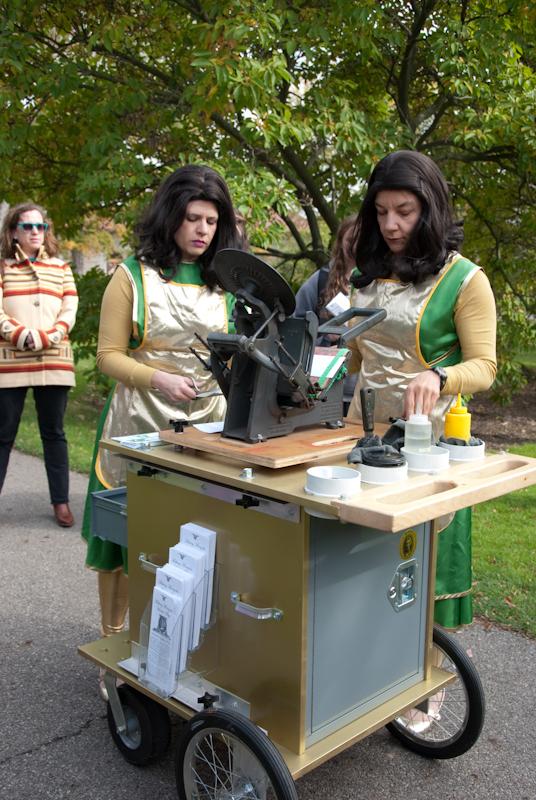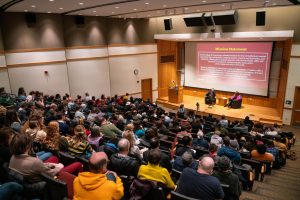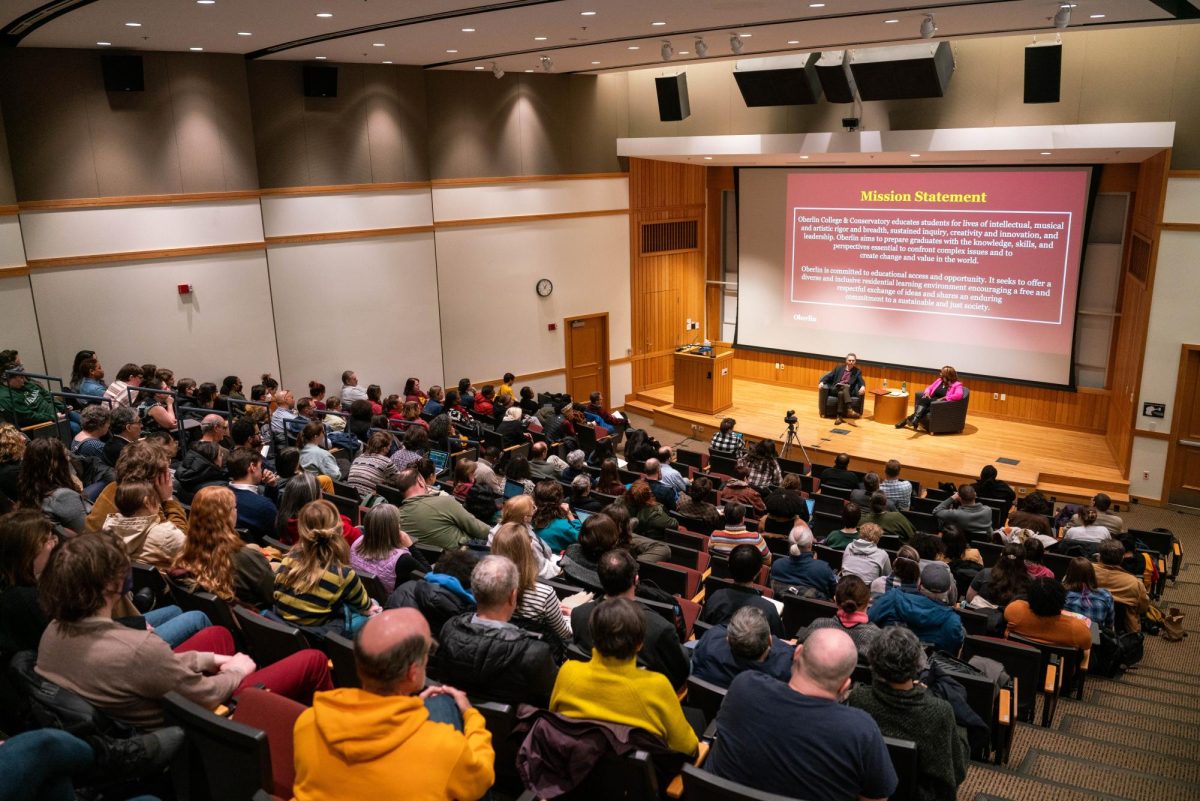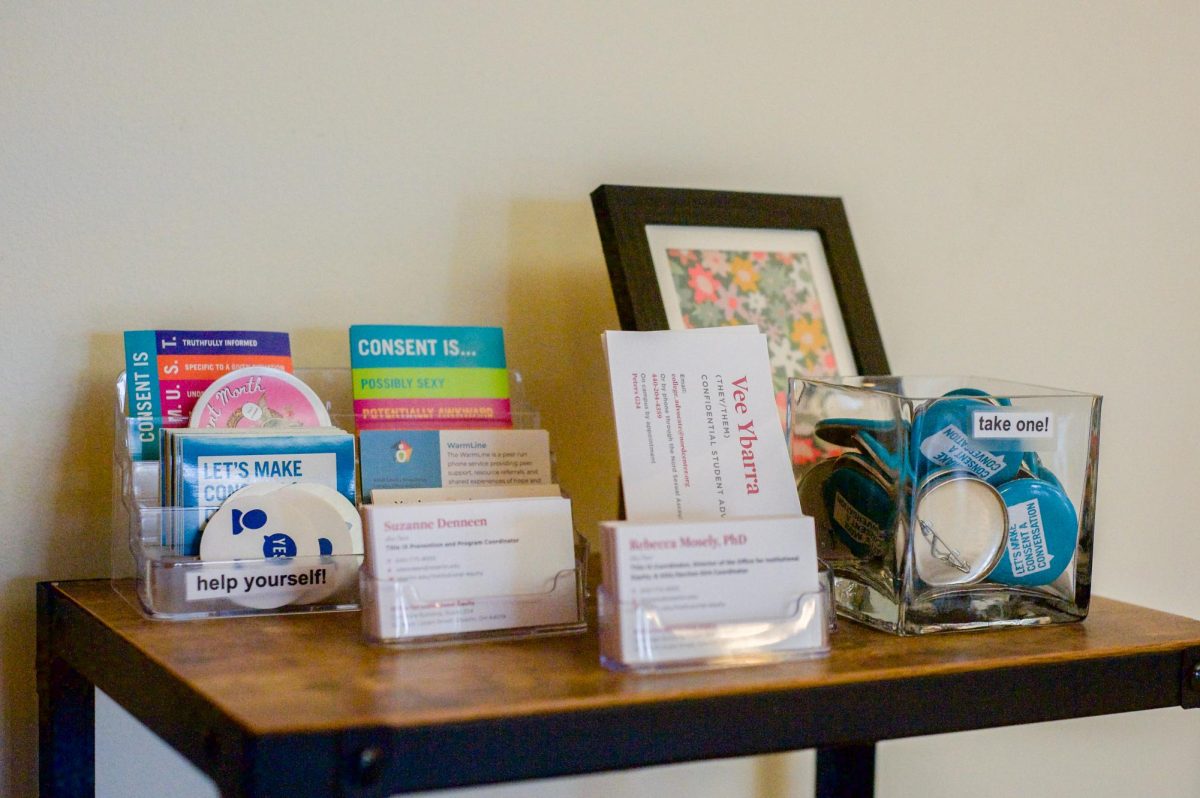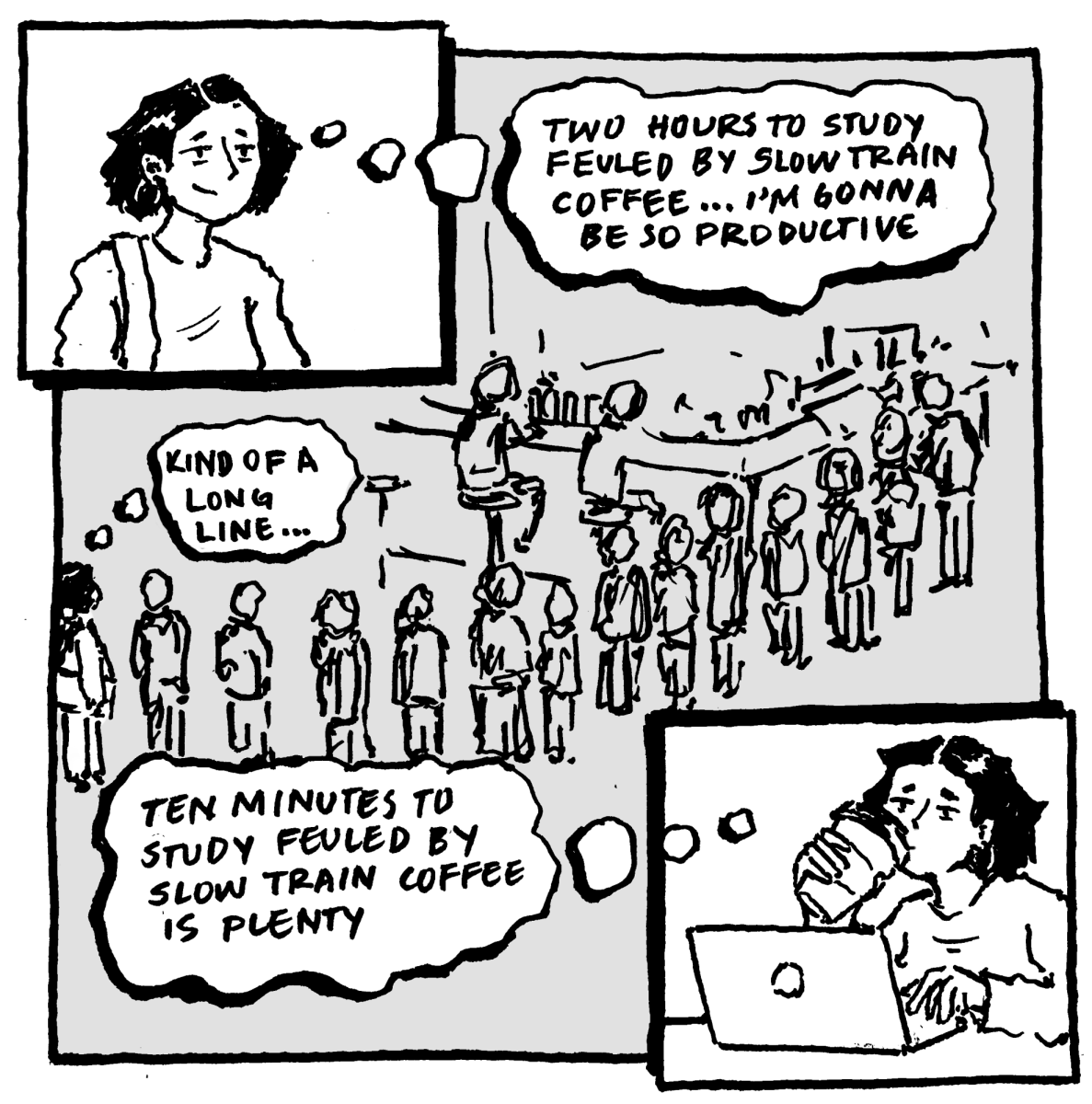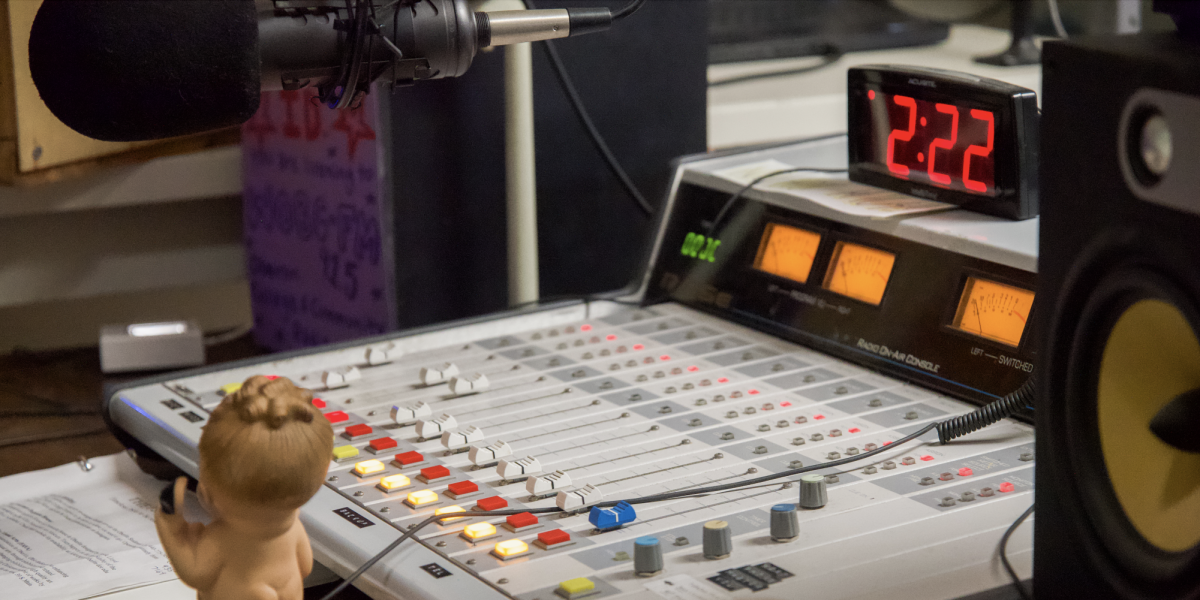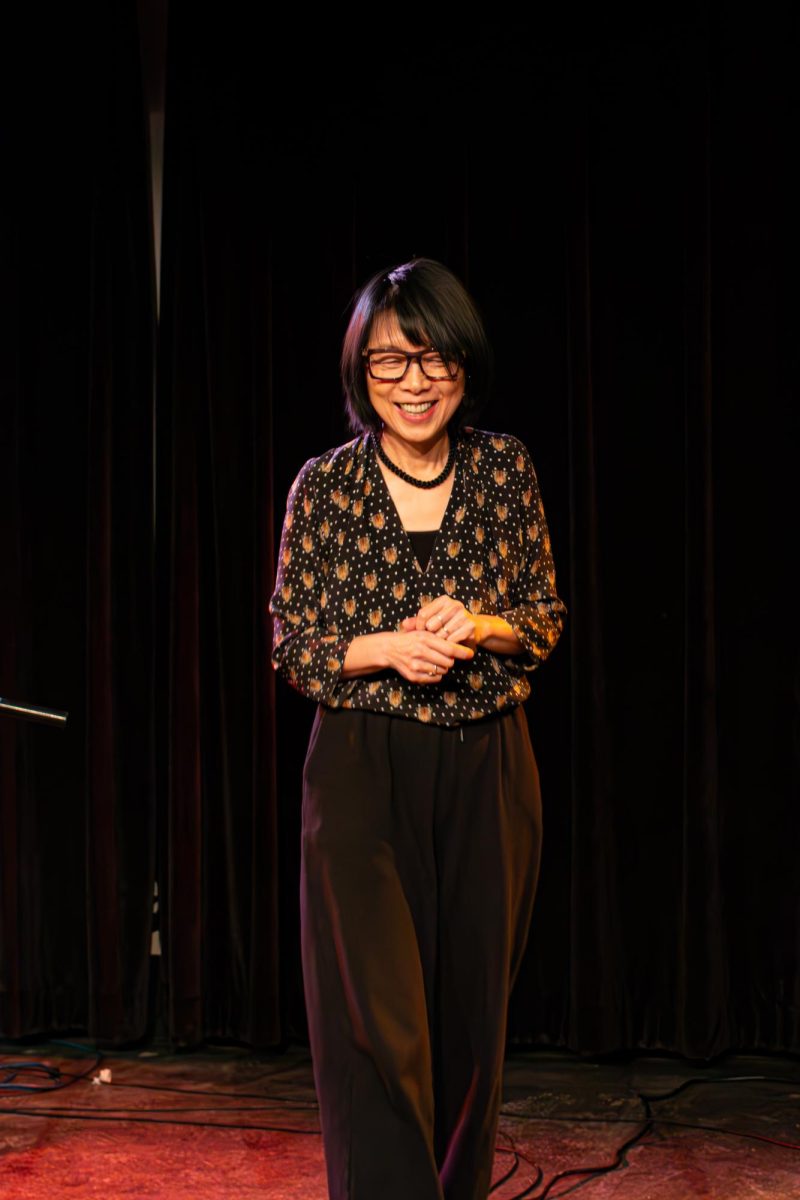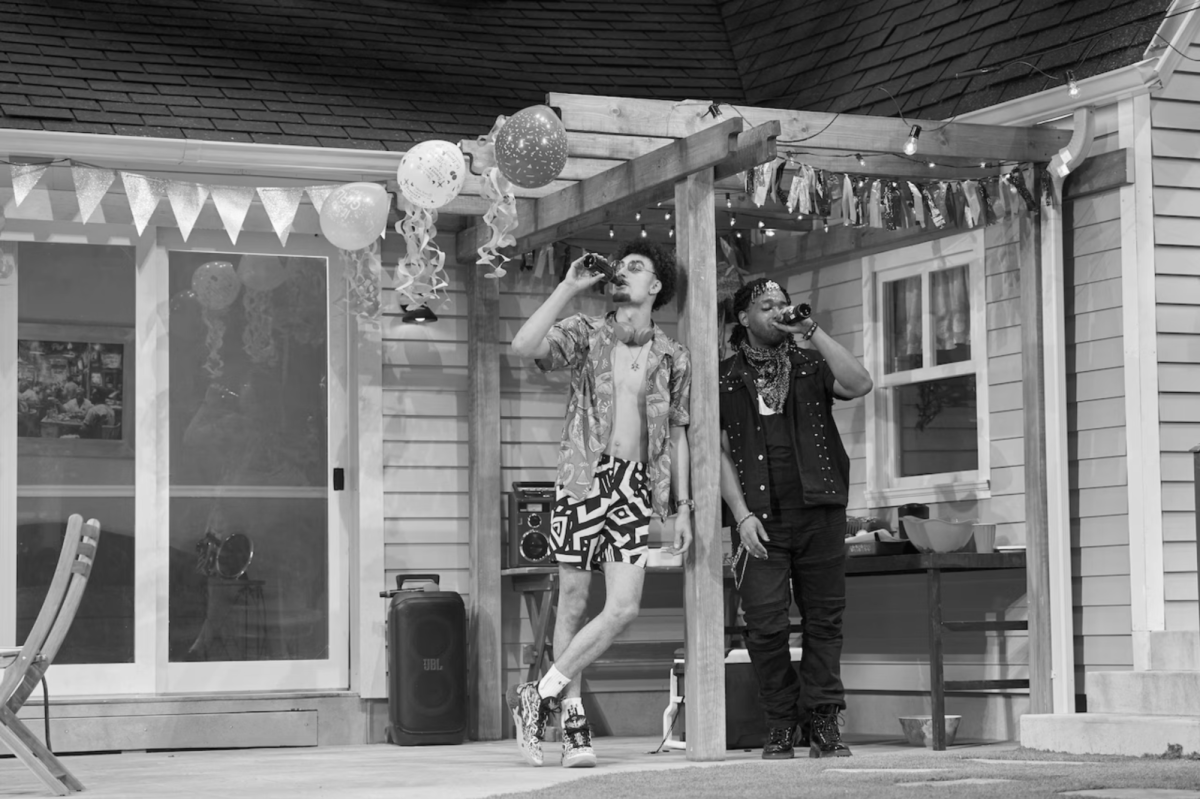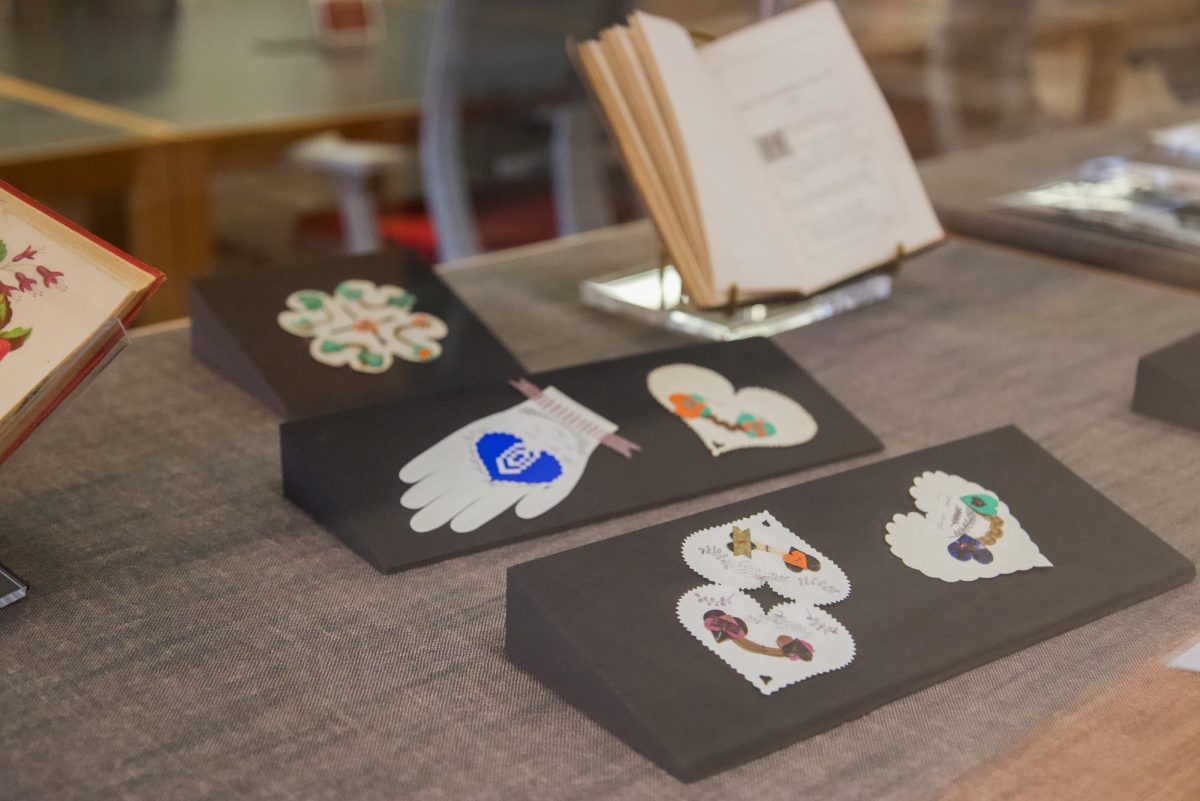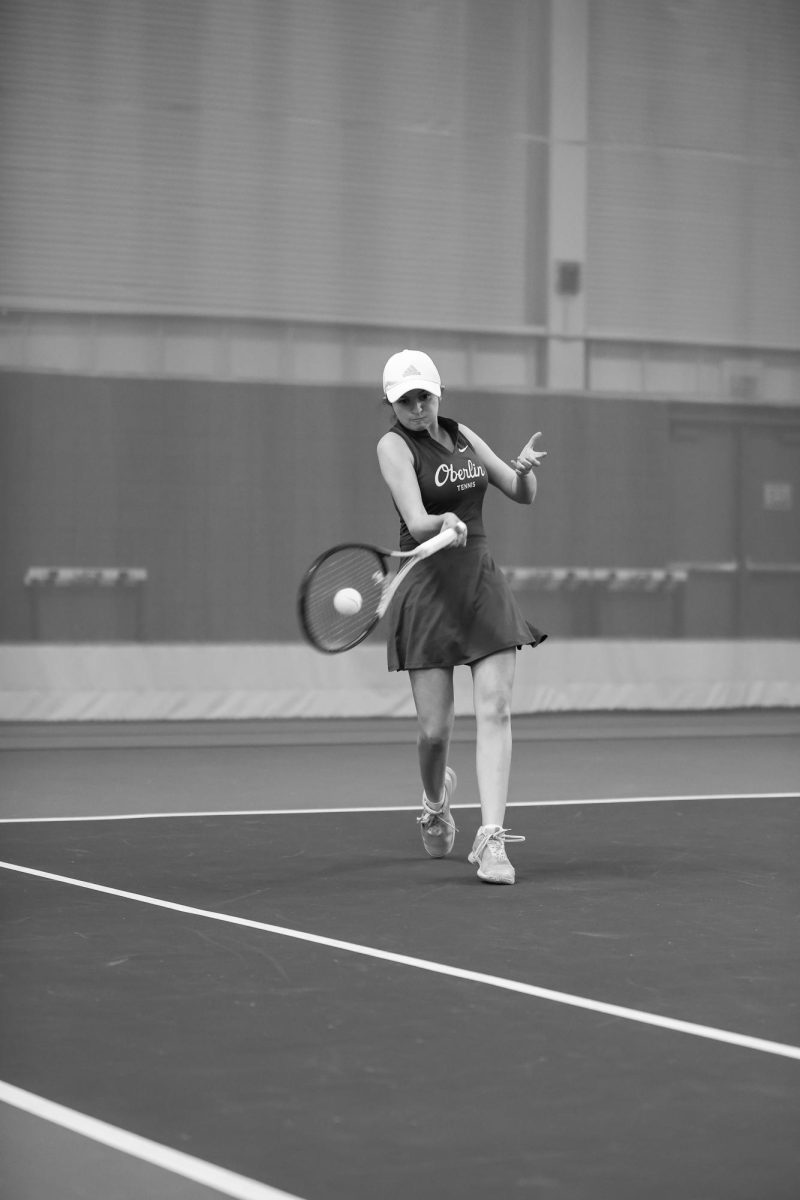Outdoor Performance Art Falls Flat
Cleveland-based artists Corrie Slawson and Elizabeth Emery print imitation currency to address wage disparity in their performance piece “Making Money the Harder Way.”
November 1, 2013
A small group of students and faculty members gathered in Tappan Square on Monday for “Making Money the Harder Way,” a performance art piece by Cleveland-based artists Corrie Slawson and Elizabeth Emery. Donning elaborate 1950s housewife costumes, the artists made their way from the square to Wilder Bowl, printing “77-cent dollar bills” on a mobile letterpress machine and handing them out to passersby. The bills were symbolic of the current disparity in legal wages in the United States, since a woman is paid 77 cents to every dollar a man makes doing the same job. The bills also featured the face of Lilly Ledbetter, the woman who sued her employer, the Goodyear Tire & Rubber Co., in 1998 for paying her less than her male counterparts.
“We’re showing people what it takes to make money, literally,” Slawson said when asked about the intent of the piece. In the talk that followed the performance piece, Slawson and Emery spoke in greater depth about their process and intent, noting that their use of Ledbetter’s specific story was intended to be an access point for a larger conversation about wage disparities extending beyond the simple “77 cents to a dollar.”
Unfortunately, “Making Money the Harder Way” struggled to achieve this goal in its Oberlin iteration. Slawson and Emery have performed the piece multiple times as an exercise in community-based, political art in public spaces in Cleveland. But on Monday, the performance took place in areas primarily occupied by Oberlin College students. In this context, one where discussion of gender inequality is somewhat routine, the message of the piece was a statement of the obvious. One student, upon being offered one of the freshly printed bills, sarcastically responded, “Yeah, sure. I am a woman, after all.”
Slawson and Emery’s gesture aimed to draw attention to an issue that is already at the forefront of many Oberlin students’ minds. For many, rather than opening up a discussion about contemporary American labor and gender politics, the performance prompted questions about the importance of audience and context in community-based, participatory performance art. One has to wonder what impact the performance might have had if, instead of being staged in front of Mudd library, it had been taken to a location like the corner of College and Main Streets, where it might have reached a wider, more diverse audience.
The performance further exemplified the difficulty that artists often face in balancing artistic vision and political message. “Making Money the Harder Way” effectively handed the audience its message on a silver platter, perhaps even beating them over the head with it. Today’s audiences have been conditioned to expect to have to work to extract meaning from a given piece. We expect to meet the artist somewhere in the middle. Arguably, without this silent contract between artist and audience, art runs the risk of losing us entirely. Slawson and Emery came unfortunately close to this. Their attempt to make their message accessible and immediately impactful worked in reverse, rendering it fairly low-impact to this particular audience.
At its core, Slawson and Emery’s effort was valiant, and their message remains an important one. Gender inequality in the workplace is a very real issue, and one that our society at large easily overlooks. As performers, the two women were committed and intense, and their aesthetic presentation was well constructed. However, the simplistic presentation of the obvious effects of gender inequality on women made it impossible not to take issue with the two-dimensionality of their depiction of the point where second-wave feminism meets economics.


